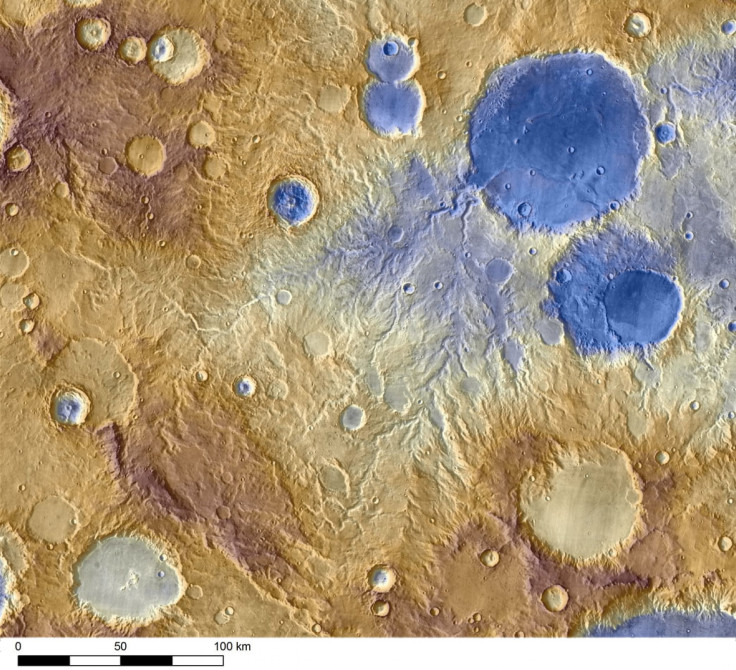Snow On Mars? New Evidence Suggests Ancient Precipitation

Researchers have discovered evidence that suggests the existence of ancient snow and precipitation on Mars. Some Martian valley networks may have been created by runoff from rain or snow.
The study was led by researchers from Brown University and examined the creation of valley networks found on Mars. These valley networks were created by flowing water at some point in Mars’ past but the water’s origins, be it from underground springs or precipitation, are still unknown, notes the press release. Led by Kat Scanlon, a graduate student at the university, the study was published in the journal Geophysical Research Letters.
Examining the various valley networks of Mars, researchers discovered evidence that four of these natural surface features may have been caused by the runoff from precipitation. The process of orographic precipitation, when moist air rises up a mountain and cools to the point of condensation, which leads to rain or snow, could explain the creation of valley networks that would appear on one side of a Martian mountain but not on the other.
According to Scanlon, the winds climbing a mountain do not have enough energy to reach the summit, causing one side to receive all the precipitation while the other of the mountain would not get any. The researchers observed four valley networks connected to a crater or mountain and used a computer model to determine wind direction. The General Circulation Model, GCM, is a simulation based on gases that researchers believe existed in the early atmosphere of Mars, notes the release. Another model used by the researchers determined where precipitation would fall along the valley area.
The models revealed that the heaviest precipitation occurred at the head of the deepest valley networks. “Their drainage density varies in the way you would expect from the complex response of precipitation to topography,” said Scanlon. The GCM simulation predicted a colder Martian climate and snowfall as the precipitation that led to the creation of the valley networks.
The next step for the researchers would be to create models that would simulate how long it would take for the snow to melt. Scanlon said, “The question is how fast can you melt a giant snowbank. Do you need rain? Is it even possible to get enough discharge [to carve the valleys] with just the snowmelt?” The new evidence from the new models could lead to a better understanding of the early climate of Mars as well as how wet the planet was during its history. Recently, researchers have discovered evidence of a large ocean that may have covered a third of Mars.
© Copyright IBTimes 2024. All rights reserved.






















